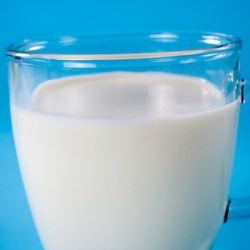 Food fraud is a substantial problem.
Food fraud is a substantial problem.
Though it doesn’t pose much of a health risk — food is still food, after all — the consumer is being deceived. If you ask for a really expensive fish at a restaurant, you should get that fish, not a cheaper imitation. Likewise (even though we think organic food is a waste of money), if you buy something that is labeled “organic” at the grocery store, it ought to be organic. That’s simply a matter of honesty and truth in advertising.
Alas, those selling food aren’t always so upright. It is very tempting to purposefully mislabel a product if you can make extra money and get away with it. Often, they can, because it is nearly impossible for consumers to tell the difference between, say, conventional and organic crops. That’s how three farmers in Nebraska were able to get away with selling conventional soybeans and corn as organic for seven years before they were finally caught.
Though consumers and regulators may be easy to fool, it is exceedingly difficult to trick scientists. A new paper in the Journal of Agricultural and Food Chemistry shows how chemists can use isotope analysis to discriminate between conventional and organic milk.
Got Isotopes?
The main challenge for chemists in determining a unique “fingerprint” that identifies milk as conventional or organic is identifying a feature of each product that is relatively consistent across time. The concentration of individual nutrients may not be a good measure, as these may fluctuate. Isotope ratios, however, generally do not fluctuate, so the research team focused on these.
Isotopes are atoms of the same element (say, carbon) that have different numbers of neutrons. Carbon-12, for instance, is the most common isotope of carbon and has six neutrons; carbon-13 and carbon-14 are less common isotopes, and they possess seven and eight neutrons, respectively. Though isotopes are chemically identical, they can be easily detected by chemists in the laboratory.
Furthermore, the isotope ratios (e.g., the ratio of carbon-13 to carbon-12) in a given sample can serve as a unique fingerprint. In this case, because cows raised on conventional or organic diets are fed different plants, the isotope ratios in their milk should be different.
And that’s exactly what they found. As shown, linoleic acid and myristic acid — both types of fatty acids — had discernibly different isotopic signatures. (This signature is known as the δ13C. You can learn how it is calculated here.)
The authors admit to using a very limited sample for this analysis, so this should be thought of as a proof-of-concept. To determine global biomarkers of conventional and organic milk (if they exist), samples from all over the world must be analyzed. Still, food fraudsters are on notice.
Source: ACSH









